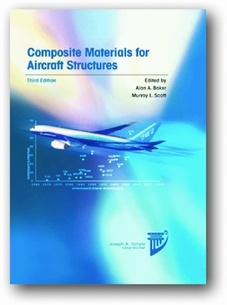
Over the last 50 years, carbon fibre-reinforced composites have evolved from small specimens in the laboratories of the Royal Aircraft Establishment (RAE) in Farnborough into primary aircraft structures of large civil aircraft such as the Airbus A350 and Boeing 787. During this time, many textbooks on composite materials have emerged, helping to educate several generations of aircraft designers and aeronautical engineers. Some of these books stood the test of time and are now entering into their third editions. Composite Materials for Aircraft Structures is one of these few. Its first edition was published in 1986, second in 2004 and the third in 2016.
Two things make this book remarkable. Firstly, the book is focused on aircraft structures and everything an engineer needs to know about composites and all that they are made of, from fibre and matrix properties, manufacturing, quality control and fundamentals of mechanics of composite materials to joining, damage detection and repair. Secondly, unlike other textbooks, this one is written not by a single author or a pair of co-authors, but by a large team of contributors from many universities and research institutions, predominantly from Australia, but also from Malaysia and USA. It is to the editors’ great credit that the book does not feel like a patchwork of separate chapters but a volume that speaks with one voice and reflects a shared vision underpinned by vast theoretical knowledge and practical expertise of the team.
The book is generously illustrated with figures, photographs, diagrams and tables that support discussion and aid understanding of various points in the text. It is great as a reference work, but for a textbook to be used in teaching of university students, it does not have many examples or problems to solve. Although one could argue that they are not really necessary in a volume that is already 600 pages long, since students could be referred to other excellent textbooks around for suitable exercises.
Another thing is missing from the book – a chapter on recycling. With composite structures being used so extensively nowadays, a question of what happens to them after they reach the end of their service life should be considered and discussed. Something for the fourth edition, perhaps?


